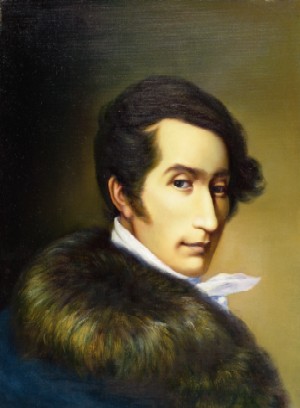
Carl Maria von Weber.
卡尔·玛丽亚·冯·韦伯。
https://en.wikipedia.org/wiki/Carl_Maria_von_Weber
History of the piece 这件作品的历史
Welcome to my comments on this exciting composition by Carl Marie von Weber. I’m
Terry Ewell and this is one of my favorite compositions for the bassoon. I first
performed the work as a student with the Seattle Symphony Orchestra. Later, as a
professional, I gave performances in Hong Kong, Washington State, and Changsha,
China. In 2017 I will be performing the work with the Mid-Atlantic Symphony
Orchestra under the direction of Julien Benichou.
The Andante and Hungarian Rondo (Andante e Rondo Ungarese) was first written in
1809 for Carl Maria von Weber’s brother Fritz, who played viola. Later, in 1813,
the work was arranged for Georg Friedrich Brandt. Although the bassoon version
was penned later, it actually received publication first in 1816. Other than
adding measures 56-59 to the bassoon version, the two original versions of the
composition are nearly identical.
It is safe to say that the composition plays a far more important role in the
bassoon repertoire than it does in the viola repertoire.
2. 行板和匈牙利回旋曲 (Andante e Rondo Ungarese) 最初是在 1809
年为演奏中提琴的卡尔·玛丽亚·冯·韦伯的兄弟弗里茨而写的。后来,在 1813 年,这作品被改編给
Georg Friedrich Brandt大管演奏家所演奏。虽然大管版本是后期写的,但它实际上是在 1816
年首次出版。除了在大管版本中增加了 56-59 小节之外,这首曲子的两个原始版本几乎相同。
3. 可以肯定地说,该作品在大管曲目中的作用远比在中提琴曲目中的作用重要。
Versions of the composition
I recommend that you purchase the Universal Edition of the composition which was
published in 1992. William Waterhouse has carefully examined the earliest
sources for this publication. I did not have this edition available for my 1984
performance so there will be some differences between the recording at that time
and my current performance of the work.
The edition on imslp.org has the advantage of being available for free. However,
this version contains editor’s additions that depart from the original version.
http://imslp.org/wiki/Andante_e_rondo_ongarese,_Op.35_(Weber,_Carl_Maria_von)
Publisher Information: Paris: Evette & Schaeffer, 1922.
To avoid any copyright violations I will use the imslp version, which is public
domain, in these videos. However, I will edit the music with knowledge of the
Universal Edition and also include my performance suggestions.
4. 我建议您购买 1992 年出版的该作品的通用版。William Waterhouse
仔细检查了该出版物的最早来源。我在 1984 年的表演中没有这个版本,所以当时的录音和我目前的表演会有一些差异。 imslp.org
上具有免费提供的版本。但是,此版本包含与原始版本不同的编辑添加内容。
5. 为避免任何侵犯版权的行为,我将在这些视频中使用公共领域的 imslp 版本。不过,我会用通用版的知识来编辑音乐,也会包括我的演奏建议。
Dissertation [論文]
I am delighted to recommend to you a dissertation by Melissa Kritzer on the
work. It is available for free on the Internet.
“Discovering the ‘Hungarian’ in Andante and Rondo: A Historical Approach to a
Standard Bassoon Solo” (Dissertation, Michigan State University, n.d.)
http://nycbassoon.com/dissertation.pdf
I will be referring to this dissertation many times in the three videos in this
series.
6. 我很高兴向您推荐 Melissa Kritzer 关于这部作品的论文。它可以在網路上免费获得。
“发现行板和回旋曲中的‘匈牙利’:标准巴松管独奏的历史方法”(论文,密歇根州立大学,日期不详)http://nycbassoon.com/dissertation.pdf
7. 我将在本系列的三个视频中多次提及这篇论文。
Articulations [音樂演奏法]
Composers of wind music in the late eighteenth and early nineteenth centuries
provide little indication of articulation in their music. Where it is provided,
we should do it. But most often the determination of what to slur was left up to
the performer. This allows for customization of articulation for the instruments
and also for the performers’ taste.
My former colleague Rudolf Haken shows many slurs are included in his version of
the viola solo. Just compare this to the lack of slurs provided by Weber in the
bassoon part.
8. 18 世纪末和 19
世纪初的管乐作曲家在他们的音乐中几乎没有提供音樂演奏法的迹象。在哪里提供它,我们就应该这样做。但大多数情况下,要添加圓滑線什么是由表演者决定的。
这允许該器樂演奏者要如何定制他們的演奏法,也可以满足表演者的品味。
9. 我的前同事鲁道夫·哈肯(Rudolf Haken)表示,他的中提琴独奏版本中包含许多圓滑線。只需将此与韦伯在大管部分提供的缺乏连线进行比较即可。
Character of the Piece 「本曲風格特色」
Have you wondered what makes the work “Hungarian?” Melissa Kritzer writes:
Today, style hongrois refers to the specific musical language used by Western
composers from the mid-eighteenth to the early twentieth-centuries to evoke the
performances of Hungarian Gypsies. P. 35
Dr. Kritzer provides further details for the rhythms in the work that evoke this
Hungarian flavor. Most of these stylistic references are found in the Rondo
movement as noted on page 39 of her dissertation. (see the video for the
examples with music)
In addition, other aspects of the Andante refer to musical idioms outside of the
Common Practice, European musical traditions. I will discuss this more in the
next video.
10. 你有没有想过是什么让这部作品“匈牙利”? Melissa Kritzer
写道: 今天,风格 hongrois 指的是 18 世纪中期到 20 世纪初西方作曲家用来唤起匈牙利吉普赛人表演的特定音乐语言。第 35 页。
11. Kritzer 博士为唤起这种匈牙利风味的作品的节奏提供了更多细节。如她的论文第 39 页所述,这些风格参考中的大多数都可以在迴旋曲樂章中找到。 (有关音乐示例,请参见视频)
12. 此外,行板的其他方面指的是欧洲音乐传统的共同实践之外的音乐用语。我将在下一个视频中对此进行更多讨论。
Copyright (c) 2016-22 by Terry B. Ewell. All rights reserved.
版權所有 © 2016-22 泰瑞·B·尤厄爾(Terry B. Ewell)。保留所有權利。